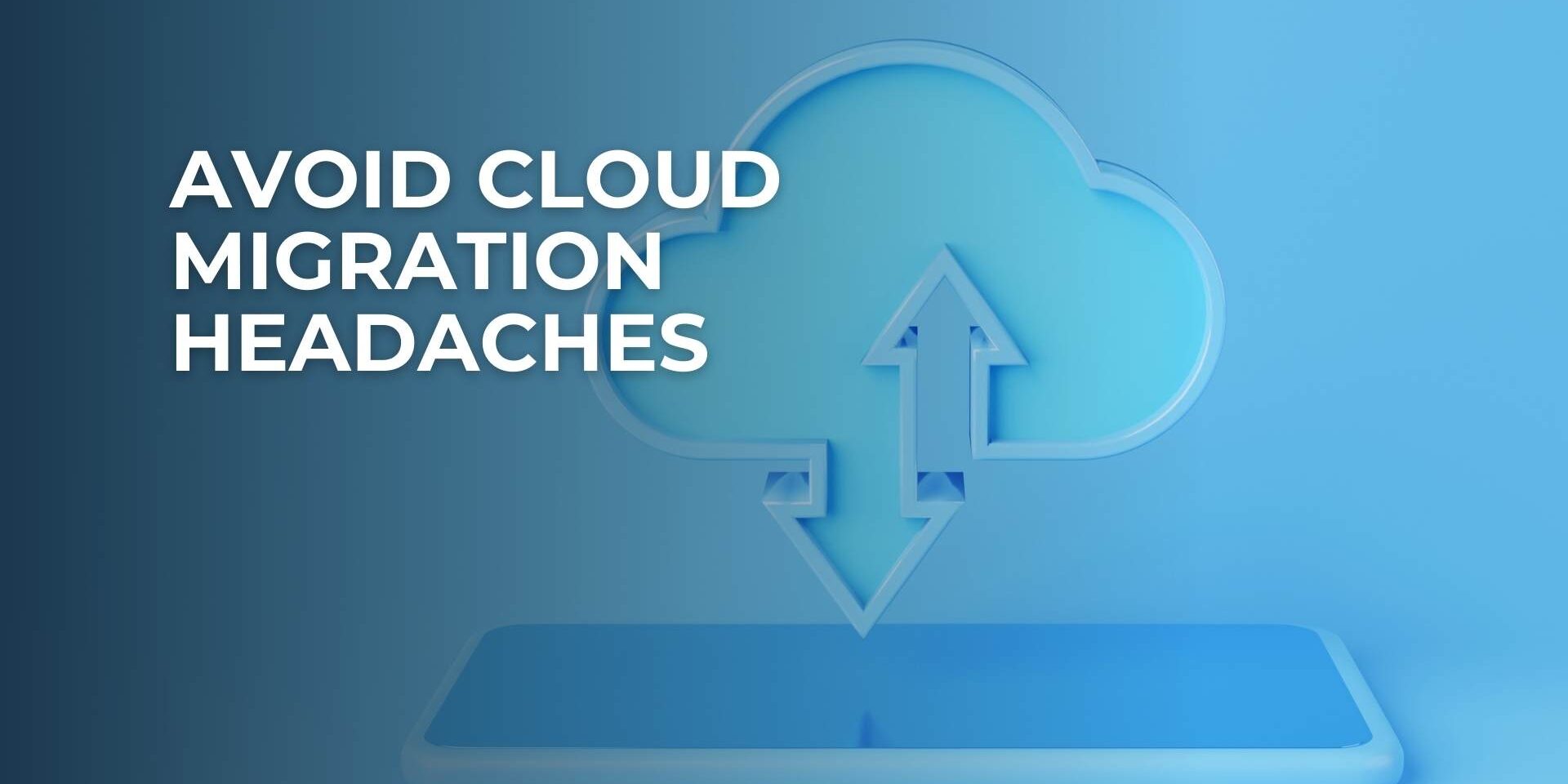
Cloud Migration Headaches
Over the last decade, cloud technology has gone from being a tool that businesses have toyed with an absolute essential. In 2019 alone, it was predicted that more than $124-billion would be spent on cloud technology in the United States. Most enterprises now use it in some form, which means you may be facing a migration whether you’re anticipating it or not.
If a cloud migration is already on the cards for you, it’s good to plan for some of the headaches you could face. By preparing yourself, you can overcome them before they become a significant issue.
Overcoming Mental Blocks
When your workforce grows accustomed to working in one way, you need to ease it into working in another. If you’re using the cloud for more than just data storage, there’s going to be an easing-in period. If you throw your employees into the depths of cloud-based working without providing support through the transition, you may find that they become less productive.
One way to overcome the mental block behind working primarily in the cloud is to gradually get them used to the idea. Rather than providing training, you may want to host one or two applications in the cloud and see how they work with them. During this time, assess potential teething problems and anticipate how they could apply to future cloud usage. With the information you gather, you can prepare for the full migration period.
Apps Failing to Work as They Should
Imagine preparing yourself for a smooth migration process, only to find that the apps you depend on don’t work as they should. Not only are you going to frustrate your employees, but your IT team will also go into meltdown. Worst of all, you could lose a lot of precious time and money while you wait for everything to come back to life again.
As 90% of companies now use the cloud, it’s safe to assume that the cloud itself doesn’t result in any major teething issues. However, that doesn’t mean you should avoid preparing for any issues that may arise. Rather than presuming all your apps will work as they usually do, roadtest them before they go live in the cloud. Giving your IT team the chance to iron out potential flaws before D-day can save a lot of frustration all around.
Pacifying Worried Stakeholders
It’s normal for stakeholders to worry about whether everything will continue as normal following your cloud migration. Additionally, they’ll want to know that their data is safe
Although you won’t be able to keep everyone happy, one of the biggest mistakes you can make is failing to forewarn all parties of interest. By giving them enough notice, you also give them the chance to ask you questions about maintaining your usual security levels. When they have answers, they may feel reassured enough to stop panicking.
Anticipating the Capacity You Need
When you keep everything in a data center, you know how much capacity is available. To avoid wasting money, you’ll research what you need and implement it accordingly. One of the dangers of cloud storage is that the possibility of endless capacity may encourage you to stop preparing. As a result, you could pay too much for capacity you don’t need or sign yourself up for a contract that is unsuitable for you. In either case, you’re wasting money that you could invest elsewhere.
Before migrating to the cloud, ask a team of professionals to anticipate how much you need. In addition to focusing on what’s necessary now, you’ll need to look at what will be required for the future. In doing so, you’ll have enough room for your organization’s essentials, but you won’t waste money on an unnecessary product.
Not Enough Support
According to Tech Jury’s 2019 predictions, an astounding 40 Zettabytes of data will be flowing through the cloud by the end of 2020. This suggests that a lot of organizations and individuals feel comfortable with using the stricture and don’t face many significant problems. However, it’s always wise to anticipate that you’ll face some sticky patches. This is especially the case when it comes to issues such as tweaking who can access various types of information or hosting apps in the cloud.
No migration period is ever trouble-free, so it’s safe to assume that such problems could arise. One way to ensure they don’t have a major impact is to use a service provider that offers plenty of support. Ideally, you’ll find a company that provides this support round-the-clock. Problems are not limited to office hours and you can’t afford to wait for your support team to clock in when you need them.
Meeting Data Compliance Rules
If you’re going to migrate all your data over to the cloud, how can you be sure you’re going to meet the compliance rules in your industry? Rules can vary wildly, especially when your organization is dealing with the government or working with clients from abroad. By migrating all of your data, you may be breaching data protection laws. You also need to be sure that you don’t accidentally hold data for any longer than is permitted.
If you’re not sure whether you’re breaching compliance best practices, hire a team of external advisors to help you out. They’ll assess what types of data you can move and let you know how to manage access accordingly. Additionally, they’ll provide a timeline on when data needs to be removed so you don’t hold any of it beyond the mandated period.
Migrating to the cloud will come with a lot of benefits once the process is complete. Successful navigation of these tasks will require you to educate your employees, roadtest apps, seek external support, and anticipate problems. With a multifaceted approach, your migration will be a big success.
Share the IT Brain Power
More from the BECA Blog



